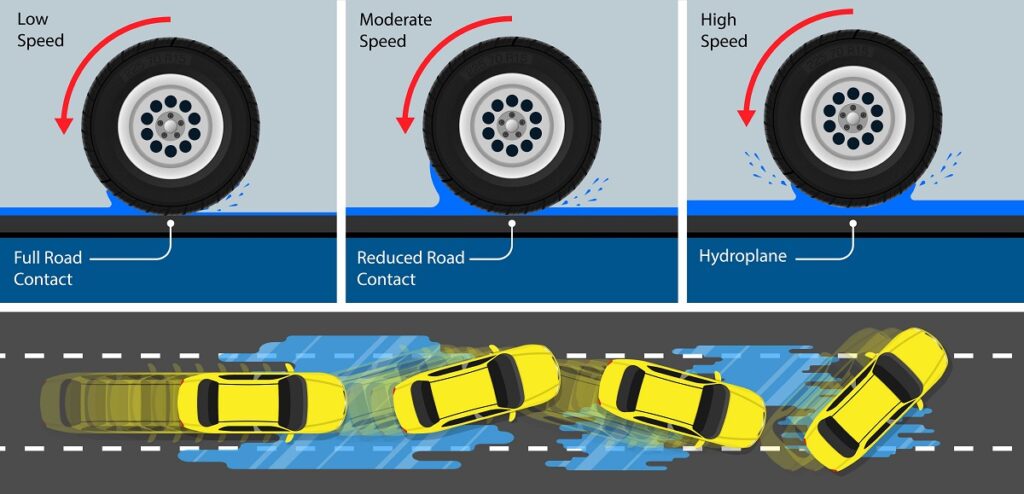So, what is the Traction Control System (TCS) and what does it do for you?
Imagine you are at a stoplight. It has rained and the road is wet. The light turns green and you want to outrun everyone and in that quest you press firmly on the accelerator. Since the road is wet, the wheels begin to spin. If your car is equipped with the TCS, it will immediately kick in. Sensing that the wheels aren’t properly in contact with the road, TCS adjusts throttle input and applies the brakes to slow the wheels. As the speed slows down, wheels gain their maximum traction. All of this happens in a fraction of a second.
TCS: A Brief History
From the late 1970s to the mid 1990s, the biggest breakthrough in automotive technology happened in the field of automotive safety and Germany was in the forefront of it. It was at the laboratories of Robert Bosch Company where three technologies were developed, namely anti-lock brakes or ABS (1978), followed by traction control (1985) and stability control (1995).
These features were first introduced in high end cars like Mercedes S-Class and BMW 7 Series models.
While all three technologies ensure improving tyre contact or traction with the road, they work differently. For example, TCS and ABS work in two entirely opposite directions, though serving the same purpose. While TCS deals with the acceleration of a vehicle, ABS deals with deceleration. In short, ABS applies when the vehicle is in motion and slipping during braking, while TCS applies when the car is trying to move from idle and slipping.
What Does Traction Control Mean and How Does It Work?

Did you know, in the Western world, all cars manufactured after 2011 onwards come with the TCS? This is because a car equipped with this system is safer than the one without. And there is another interesting bit of information for you regarding TCS – it runs in the background without you even noticing it.
So, the traction control system is an electronic system that uses the same sensors as the ABS to either prevent or at least reduce wheelspin.
Why are these systems important to have in your car? The reason is rather simple – a vehicle not in proper contact with the road can seriously put the driver and other passengers in the car at risk of an accident.
As mentioned earlier, TCS main purpose is to detect when a tyre loses its grip, causing the wheel to spin, and then either stop that spin or reduce it. When the ABS sensors detect that a wheel is spinning, the car’s computer will instantly cut the engine’s output, resulting in the wheel to slow down and regain traction.
Traction Control System (TCS) v. Vehicle Stability Control (VSC) v. Anti-lock Braking System (ABS)
Since all three are concerned with the control of the car by ensuring maximum contact between the tyres and the road, but all three work differently, some readers might be confused. To end this confusion, here is how each works:

TCS – As the car picks up speed from idle on icy, snowy, rainy road conditions and the tyre starts to spin, TCS kicks in to ensure the contact between the wheel and the road by reducing the speed of the wheel.

VSC – This system kicks in when the car loses traction while cornering. The system selectively applies brakes on some wheels to prevent over or under steering. This helps your car from sliding off the road.

ABS – ABS kicks in when you slam on the brakes. ABS prevents the brake pads from gripping the brake discs to lock the tyre. This stops the tyre from skidding and increases the traction.
Should You Ever Switch Off TCS?

As mentioned earlier, TCS works in the background without you ever noticing it. Though, this doesn’t mean that you can’t switch it off. But should you?
Under normal driving conditions, it is not recommended to switch off this technology. The reason being, your computer will act far faster than you are able to react when your wheels start to spin and you lose control.
However, if you are driving on snow or icy roads, it is advisable to switch off TCS. The reason for this is that under such road conditions, your tyres will have limited traction and to stay in contact with the road, the wheels will spin and if the TCS is on, it will prevent it.
TCS Light On Dashboard And What It Means?

If your car is equipped with this technology (not every car is in Pakistan including some new locally manufactured cars), TCS light will illuminate for a short period of time when you switch on your car. If the light stays there and doesn’t go away, it means there is something wrong with the system and you should see your mechanic.
If the light illuminates for a short period of time while you are driving, it means the system is active. This is most likely to happen when you are driving on a snowy or icy road, or in heavy rain.
If the light starts to come on more frequently even when you are driving under normal road conditions, it could mean your tyres are worn out.
We hope you found this writeup helpful and hopefully now you know the difference between TCS, ABS and VSC and how they work.
If you are looking to buy car spare parts, do check them out on OLX Pakistan.








Leave a Reply